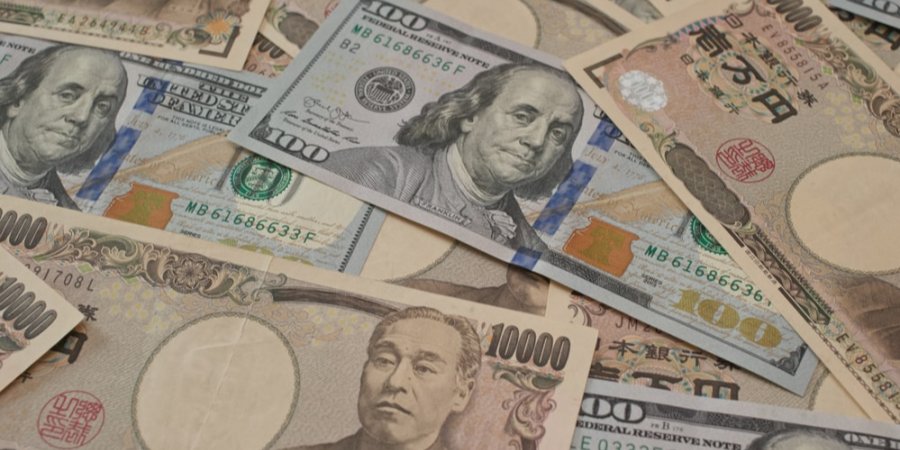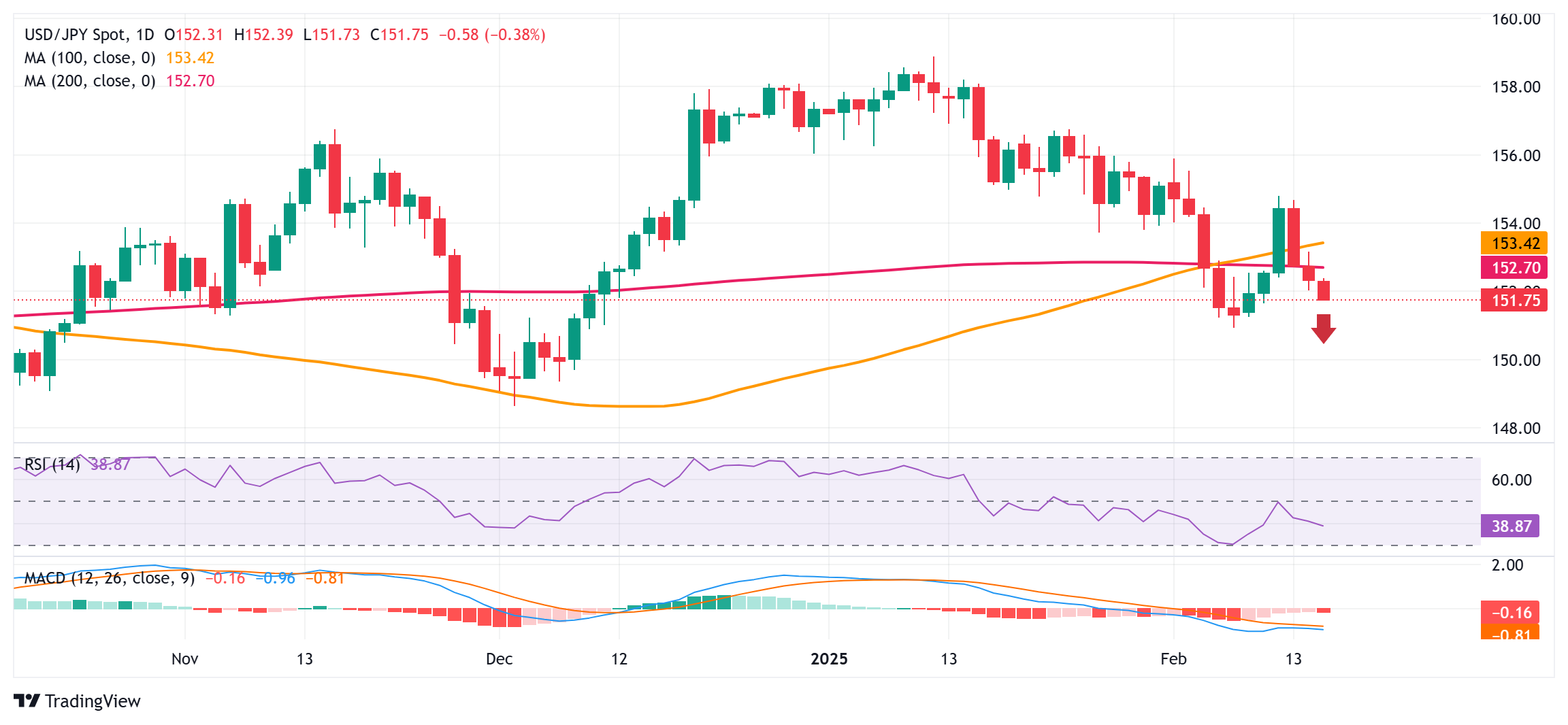Japanese Yen builds on upbeat GDP-inspired gains; USD/JPY slides further below 152.00

The Japanese Yen attracts strong follow-through buying in reaction to the upbeat Q4 GDP.
Optimism over the delay of Trump’s reciprocal tariffs provides an additional boost to the JPY.
The USD languishes near a two-month low and further contributes to the USD/JPY pair’s slide.
The Japanese Yen (JPY) strengthened across the board following the release of a strong Gross Domestic Product (GDP) report, which showed that Japan’s economic growth blew past expectations in the fourth quarter. This comes on top of signs of broadening inflationary pressure in Japan and reaffirms market bets that the Bank of Japan (BoJ) will hike interest rates further, which, in turn, provides a goodish lift to the JPY.
Apart from this, the optimism over a delay in US President Donald Trump's reciprocal tariffs and the narrowing of the US-Japan rate differential turn out to be other factors lending support to the lower-yielding JPY. The US Dollar (USD), on the other hand, languishes near a two-month low touched on Friday, which drags the USD/JPY pair lower for the third successive day, to the 152.75 region during the Asian session.
Japanese Yen bulls retain control amid rising bets for additional BoJ rate hikes
Data released earlier this Monday showed that Japan's economy expanded by 0.7% in the October-December quarter compared to the previous quarter's upwardly revised reading of 0.4%.
The yearly growth rate accelerated from a revised 1.7% in the third quarter to 2.8%, which supports the Bank of Japan's plan to keep hiking rates amid signs of broadening inflation in Japan.
Japan's Economy Minister Ryosei Akazawa said that he expects the economy to continue making a modest recovery, though he noted the need to be mindful of overseas economic downside risks.
Tokyo-based Kyodo News reported on Sunday that Japan had asked to be exempted from US President Donald Trump's 25% tariffs on steel and aluminum, and the so-called reciprocal tariffs.
This follows Trump’s order on Thursday to formulate plans for reciprocal tariffs on every country that imposes taxes on US imports, though he stopped short of announcing immediate levies.
This, along with the dismal US Retail Sales figures released on Friday, keeps the US Dollar depressed near its lowest level since December 17 and weighs on the USD/JPY pair.
The US Census Bureau reported that Retail Sales declined by 0.9% in January, worse than the decrease of 0.1% expected and the 0.7% increase (revised from 0.4%) in December.
US Secretary of State Marco Rubio signaled on Sunday that talks with Russia this week were a chance to see how serious Russian President Vladimir Putin is about peace.
Adding to this, Trump said that he was working hard to achieve peace and that he believed he could meet Putin very soon to discuss ending the protracted war in Ukraine.
USD/JPY seems vulnerable while below the 200-day SMA, around 152.70 area
From current levels, the 151.45-151.40 area could offer immediate support ahead of the 150.95-150.90 region, or the lowest level since December 10 touched earlier this month. Given that oscillators on the daily chart are holding in negative territory, some follow-through selling would be seen as a fresh trigger for bearish traders. The USD/JPY pair might then accelerate the fall towards the 150.00 psychological mark en route to the 149.60-149.55 zone, the 149.00 round figure, and the December 2024 swing low, around the 148.65 region.
On the flip side, any meaningful recovery beyond the 152.00 mark might confront a strong hurdle near the 152.70 area, or the 200-day Simple Moving Average (SMA). This is followed by the 100-day SMA, currently pegged near the 153.15 region, which if cleared decisively could trigger a short-covering rally. The subsequent move up has the potential to lift the USD/JPY pair beyond the 154.00 round figure, towards the 154.45-154.50 supply zone en route to last week's swing high, around the 154.75-154.80 region.
* The content presented above, whether from a third party or not, is considered as general advice only. This article should not be construed as containing investment advice, investment recommendations, an offer of or solicitation for any transactions in financial instruments.



